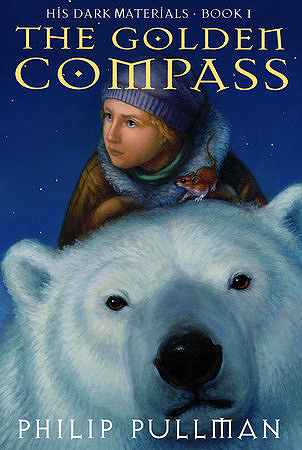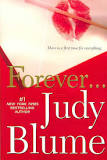Fallen Angels is a young adult novel that was written by Walter Dean Myers in 1988. This coming of age novel is set in the trenches of the Vietnam War during the late 1960’s. Myers wrote this novel based on his own experiences of fighting in the war. However, this novel is not purely autobiographical consider much of it is fiction in nature. In the decade after its’ publication, Fallen Angels held a place in the top twenty books on the American Library Association’s list of top one hundred most challenged books. This was due to the realistic depiction of the war and the language displayed in the novel. This book was nominated for the 1989 Coretta Scott King award. Fallen Angels tells the powerful story of a desperate seventeen year old boy, Richie, from Harlem who joined the armed forced as a way to escape the questions and to support his family. Richie’s dad left the family several years before the book’s timeline, and his mother was a non-progressive alcoholic. However, Richie’s little brother Kenny was his light at the end of the tunnel and served as his motivation when he could not find any reason to continue. Richie’s plans for after high school was to go to college and pursue his dreams of being a writer, but his family’s financial situation had other plans which lead to his enrollment in the United States armed forces.
After graduating from basic training, Richie was stationed in Vietnam. With an unclear view on war and its’ terrors he went in with the hope of avoiding field time due to a knee injury. Richie met two new guys from his squad Pewee and Jenkins who collectively decides that they are in this together. However, after only this first patrol Jenkins is killed. This immediately sends Richie into a state of fear and uncertainty. He communicates with Kenny and his mom through letters, but he never fully opens up to how he feels and what is going on. As time passes, Richie realizes war is very different from what he expected. Being the whole-hearted person he is pushes him to question many of the things going on around him like the reasons for the war and the line between good and bad sides of things. After Lieutenant Carroll, Richie’s patrol leader, he is killed it pushed him to the point of having to get to the bottom of what the war was all about. His Captain had only one goal at mind and that was a promotion rather than his soldiers. Richie became disgusted with the reality of war.
As time progresses, Richie is faced with the question of why he took this path in the first place. Was it to support his family or was it just to get out of Harlem? He also wondered what things would be like if/when he returned back home. Richie had nothing to look forward to back home, but he could not find what was so great about his current situation either. In the coming weeks, Richie wound up getting injured in duty. This gave him time to relax, but also made him think about how awful his time in the field has been. Against his better judgement, he returns in due time. Upon his arrival, he meet his new Sergeant Mr. Dongan who happens to be very racist against blacks. This flourishes racism from some of the squad members and often times resulted in physical altercations among the men. With time and bonding, the men of the platoon grew closer together and overcame their racist tendencies. It also was not long before the new sergeant was killed in duty.
One of the soldiers stationed in Vietnam gets a promotion which leads to him become the new leader. Corporal Brunner leads Richie and Pewee on what they did not know would be their last tour of duty. Due to a ripple effect of miscalculations the squad falls victim to a firefight. Both guy are badly wounded which result in them being sent home. Although they understand the harsh reality of the war they attempt to keep it together for the new recruits.
There are several key themes Myers addresses in his novel which specifically relate to the young adolescent community. Two very important themes presented in novel are youth and innocence and identity. Throughout the novel, the reader encounters many young soldiers who do not even understand what they are fighting for or why they are there. Everyone wants to be the hero and seen as doing their country a great duty when in reality most young soldiers are nothing but collateral damage. The title of the novel, Fallen Angels, refers to the young men who fall victim to a fight much bigger than they ever imagined. The war changed many of the young men who participated it. If they did not end up dead, there were certainly scared and changed for life. One’s adolescent years is a naïve time. Often time’s adolescents do not know what they are getting into or how their decisions today make have a lasting effect on their lives from here on out. To go along with their youth and innocence, adolescents are constantly trying to figure out who they are and develop a sense of identity. In the novel, Lobel is participating in the fight in hopes of convincing his dad that he is not a homosexual. On the hand, Richie views himself now as a monster and killer. However, when he thinks of his time served as providing for his family he feels like a hero. Many of the men who went off to the war struggle to understand themselves and their purpose in the world. The adolescent years of one’s life serves as a time of figuring out who you are and what you believe. It is sometimes a huge struggle trying to be or find yourself when everyone is trying to make you into something you are not. This is something that starts at a young age but carries out through much of your adult life.
As mentioned earlier, race is a problem in this novel. Many young adolescent experience or witness race issue many times in their lives. This novel provides an example on how fighting or violence is not the answer. It is when people band together to fight the good fight that great things come as a result. The way the platoon fought together against Sergeant Dongan racist tendencies was a powerful move.
Fallen Angels defines the adolescent years of one’s life as a time of trouble, uncertainty and finding yourself. As seen through the main character, Richie, all he knows is that he wants to live a good life. Adolescents are looking for where they fit in and what their future holds. Often times, they encounter obstacle and problems that pushes them to question the world around them. For Richie, this was his time in Vietnam when he was forced to face the reality of war. This novel shows how adolescent are kind of at the bottom of the food chain. They get pushed around or easily persuaded by the expectation of a situation. However, in the end they are faced with the truth which usually teach them an ultimate lesson.
The two main things that forced this novel into the banned category is the amount of profanity and the harsh truth about war. Myers mentions how without the profanity he could not quite make clear points of how things are during the fight. The language is what brought the text to life and helped readers gain a clear understanding. Along with the profanity, there is some descriptive explanation of battle. It is acceptable for parents not to want their children to be expose to violent language and images. The way Myers describes combat and different situations in the novel causes fuels different levels of concern, and he doesn’t hold back on how things are which gives the reader a lot of insight. I believe allowing students to grasp the complete idea of how things are is nothing less of a great thing.
“Censorship Watch.” American Libraries 31.10 (2000): 17. Academic Search Complete. Web. 6 Apr. 2016.
Salvadore, Maria B. “Fallen Angels (Book Review).” School Library Journal 34.10 (1988): 118. Academic Search Complete. Web. 6 Apr. 2016.

 Author: John Green
Author: John Green

